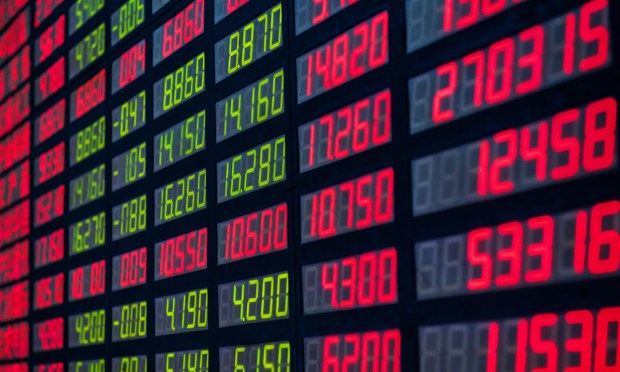
The wealth effect giveth, and it taketh away.
This week’s stock market volatility, and especially Friday (April 12)’s plummet in the wake of big bank earnings, shines a light on the value of stock market holdings.
Specifically, it highlights who holds those holdings, and what it all means when we feel flush with cash, until suddenly we don’t.
At this writing, the Dow Jones Industrial Average slid 1.3% on Friday, and now is up 0.8% for the year. But it’s still up 12% through the past 12 months. We note that there are “broader” market indices out there, but the Dow has historically been a benchmark to how the market’s been doing.
As recently as 2022, the Federal Reserve reported, among the most widely held type of financial asset was the retirement accounts — which include individual retirement accounts, Keogh accounts, and certain employer-sponsored accounts, such as 401(k) accounts. Those accounts were held by 54.3% of families. Direct ownership of stocks increased markedly between 2019 and 2022 — from 15% of families to 21% — the largest change on record, the Fed said.
In terms of income participation, the Fed’s data estimated that participation in the stock market in 2022 rose across income profiles: 34% of families in the bottom half of the income distribution held stock, compared with 78% of families in the upper-middle groups, as measured by income.
The read across here is that a significant percentage of us have stock market accounts, or individual holdings. And through the past few years, the propensity to spend has been steady. Since the depth of the pandemic, the Dow’s up about 45%.
The concept behind the wealth effect is simple: Consumers spend more when their wealth — the value of the accounts, the investments, the property they own — increases.
But the opposite holds true. When wealth, or perceived wealth, moves downward, we pull back on our spending, perhaps convinced that there’s not enough “backup” in the bank to underpin that spending.
Confidence, as they might say, is everything.
PYMNTS Intelligence data has uncovered in the current inflationary environment, more than 60% of consumers told us that price is a factor in deciding what to buy — and 29% say price is the most significant factor. Similarly, when deciding where to shop, more than 48% say price shapes their decision.
The price-is-key factor comes as more than 80% of consumers have told us that wages are not keeping pace with inflation. When income does not feel enough to buoy spending, then the wealth effect might do much to close that gap. Given the whipsaw of the markets, consumers may prove to be mercurial, too, at the register.